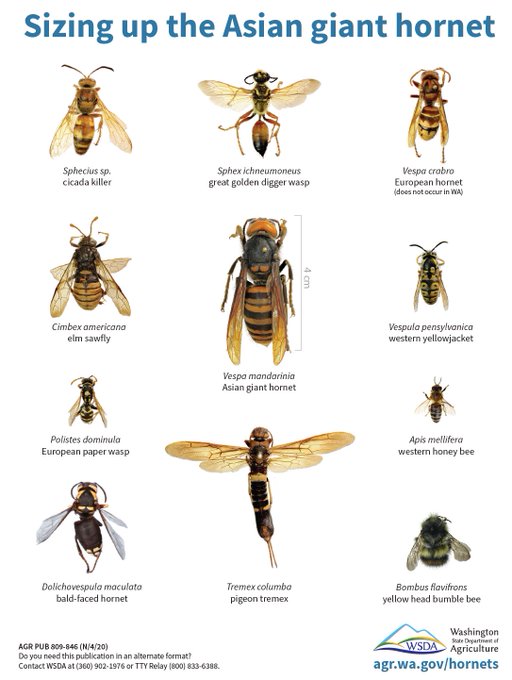What's up to 2 inches long, orange and yellow, and likes to decapitate bees? Meet the Asian giant hornet, now spotted in North America.
If you didn't think 2020 could get much worse, it just did with the invasion of murder hornets.
The Asian giant hornet (vespa mandarinia) is described as 1.5 inches to 2 inches in length with an orange-yellow head and black stripes on its abdomen.
Kyoto Sangyo University researcher Jun-ichi Takahashi said the hornet species earned its "murder hornet" nickname due to its toxic venom, which is equivalent to that of a venomous snake, according to a New York Times piece on Saturday that got social media talking about the horrifying pest. Multiple stings from this large hornet can be fatal. So much so that hornets kill up to 50 people a year in Japan alone.
And now they're in the United States.
The large hornets were first seen in the US in December in Washington, Washington State Department of Agriculture (WSDA) verified. It's not known how the giant hornets first arrived in North America, but insects often hitch a ride to other countries via international shipping boats and other transportation. So far, the hornet sightings have been limited to the Pacific Northwest.

Originally from eastern and southeast Asia, the giant hornet eats other insects like wasps and bees. In fact, the hornet is known for wiping out full colonies of honeybees, which is alarming since bee populations are already in decline, putting them on endangered lists.
Just a few Asian giant hornets can destroy a honey beehive in a matter of hours. The large hornets use their spiked mandibles to rip the heads off of the bees, then eat the bee thoraxes.
If that's not horrifying enough, the Asian giant hornet's stingers are long enough to poke through beekeepers' suits that usually protect humans from bee stings.
In 2018, YouTuber Coyote Peterson -- known for letting insects bite and sting him on purpose -- showed what it feels like to be stung by the hornet when he was visiting Japan. Spoiler alert: The hornet's stinger gets stuck in his skin as it pumps venom into his arm.

According to the WSDA, which has been actively monitoring the insect's activities, the Asian giant hornet stinger is longer than that of a typical wasp. It can sting several times. And even a single sting can deliver a large dose of venom that can damage skin tissue.

If you want to avoid getting stung by the Asian giant hornet, WSDA has a few suggestions. While these hornets don't generally attack people or pets, they can attack when threatened or when protecting their nest. So do not rely on typical beekeeping protective clothing as it's not sufficient to protect from stings.
